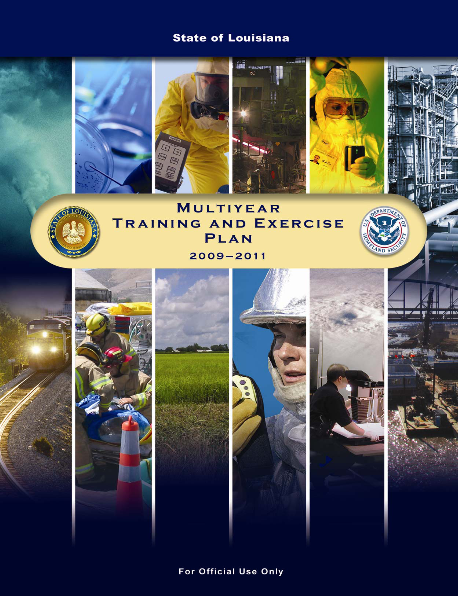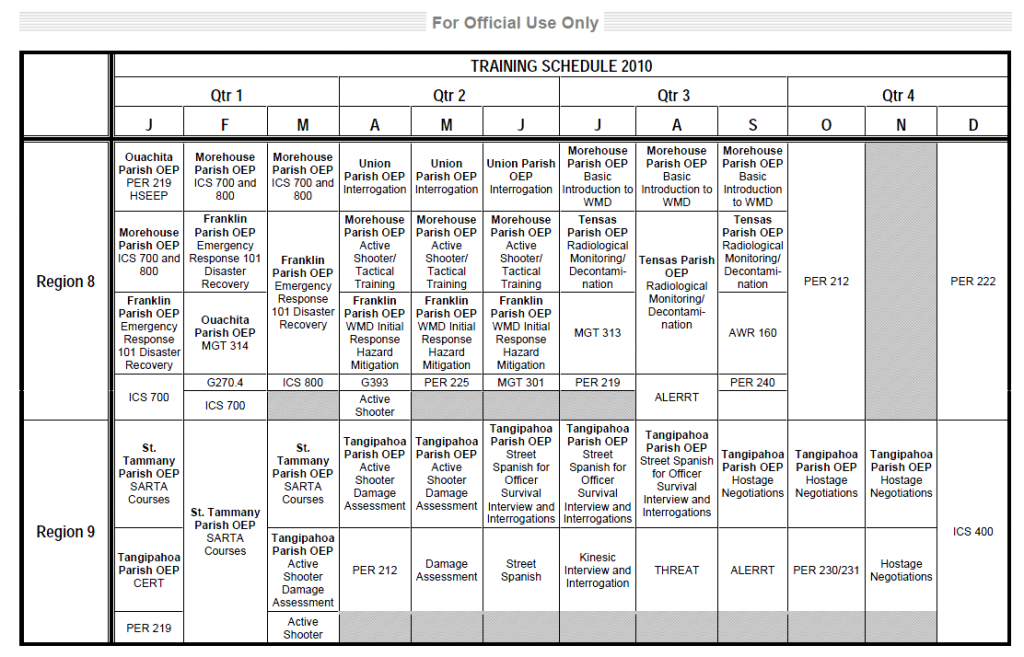 State of Louisiana
State of Louisiana
- 54 pages
- For Official Use Only
- November 13, 2009
The purpose of the Multiyear Training and Exercise Plan (TEP) is to provide a companion document to the State of Louisiana Homeland Security Strategy. The Louisiana Multiyear TEP is a living document that will be updated and refined annually. This plan provides a roadmap for Louisiana to follow in accomplishing the
priorities described in the State of Louisiana Homeland Security Strategy. Each priority is linked to the associated target capabilities that will facilitate its accomplishment and to the training and exercises that will help obtain or validate those capabilities and address that priority.The Louisiana Multiyear TEP includes the training and exercise schedule, which provides graphic illustration of proposed activities for the years 2009–2011. It represents the natural progression of training and exercises that should take place in accordance with the building-block approach.
…
Full-Scale Exercises (FSEs)
FSEs are multiagency, multijurisdictional exercises that test many facets of emergency response and
recovery. They include many first responders operating under the ICS or Unified Command to effectively
and efficiently respond to, and recover from, an incident. An FSE focuses on implementing and analyzing
the plans, policies, and procedures developed in discussion-based exercises and honed in previous, smaller
operations-based exercises. The events are projected through a scripted exercise scenario with built-in
flexibility to allow updates to drive activity. It is conducted in a real-time, stressful environment that closely
mirrors a real incident. First responders and resources are mobilized and deployed to the scene where they
conduct their actions as if a real incident had occurred (with minor exceptions). The FSE simulates the
reality of operations in multiple functional areas by presenting complex and realistic problems that require
critical thinking, rapid problem solving, and effective responses by trained personnel in a highly stressful
environment. Other entities that are not involved in the exercise, but that would be involved in an actual
incident, should be instructed not to respond.An FSE provides an opportunity to execute plans, procedures, and MAAs in response to a simulated live
incident in a highly stressful environment. Typical FSE attributes include the following:
- Activating personnel and equipment
- Allocating resources and personnel
- Analyzing memorandums of understanding (MOUs), SOPs, plans, policies, and procedures
- Assessing equipment capabilities
- Assessing interjurisdictional cooperation
- Assessing organizational and individual performance
- Demonstrating interagency cooperation
- Exercising public information systems
- Testing communication systems and procedures
The level of support needed to conduct an FSE is greater than needed for other types of exercises. The
exercise site is usually extensive, with complex site logistics. Food and water must be supplied to
participants and volunteers. Safety issues, including those surrounding the use of props and special effects,
must be monitored.FSE controllers ensure that participants’ behavior remains within predefined boundaries. Simulation Cell
(SimCell) controllers continuously inject scenario elements to simulate real events. Evaluators observe
behaviors and compare them against established plans, policies, procedures, and standard practices (if
applicable). Safety controllers ensure that all activity is executed within a safe environment.…


